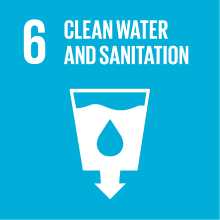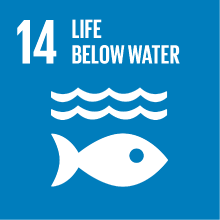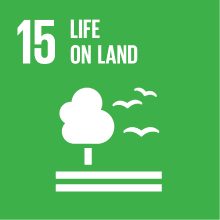SWEDISH LITERATURE 2 MOD. 2
- Academic year
- 2018/2019 Syllabus of previous years
- Official course title
- LETTERATURA SVEDESE 2 MOD. 2
- Course code
- LT40AB (AF:248291 AR:135862)
- Modality
- On campus classes
- ECTS credits
- 6 out of 12 of SWEDISH LITERATURE 2
- Degree level
- Bachelor's Degree Programme
- Educational sector code
- L-LIN/15
- Period
- 1st Semester
- Course year
- 2
- Where
- VENEZIA
- Moodle
- Go to Moodle page
Contribution of the course to the overall degree programme goals
Expected learning outcomes
The aim of the course is to give an in-depth knowledge of the theme in its specific Swedish and Scandinavian version; the students should also learn to contextualize the studied works historically, socially and literarily, and to analyze their contents and forms.
Pre-requirements
Contents
The threshold experience of passing from the ancient rural community, with its self-sufficient economy, to 20th century urban and industrial modernity, is a recurrent literary theme, and it is presented, with similarities and differences, by several Scandinavian authors. The Danish writer J.V. Jensen depicts memorable figures of tramps and outsiders in the stern rural world of his Himmerland; the Norwegian fellow writer Knut Hamsun describes the wanderer of the Romantic tradition, but a wanderer who is also marked by 20th-century anxiety and disharmony. The Swedish writer Harry Martinson combines the novel form, the lyrical quality, and the historical-sociological perspective in his novel about the luffare, the Swedish tramps. The Swedish writer of children’s books Astrid Lindgren is inspired by the same context when she writes the story of an adoptive relationship between a luffare and a young orphan and fugitive.
The comparative work will help to highlight similarities and differences, as to both contents and form, between these works.
Referral texts
Contextualizing the works and profiles of the four authors within the Swedish and Scandinavian literary history from about 1890 to 1950 through the notes written by the professor and uploaded on Moodle:
file pdf "Storia letteratura Nord 1_2018-19"
file pdf “Storia letteratura Nord2_2018-19”
any materials uploaded on Moodle and connected to the course
2) Studied works
Johannes V. Jensen 1898-1910, selezione da Racconti (da Storie dello Himmerland), Milano, Fabbri, 1967 / Himmerlandshistorier: et udvalg, København, Gyldendal, 1981
The selection includes (in Italian translation) the following stories: “Trentatré anni”, “Il cacciatore di Lindby”, “Il podere fuori mano”, “Un abitante della terra”, “Il circo Wombwell”, “I dormiglioni”, “Il cercatore d’oro” and “Tordenkalven”
Knut Hamsun 1906, Sotto la stella d’autunno, Milano, Iperborea, 1995 / Under høststjærnen, in K. Hamsun, Samlede verker, 4, Oslo, Gyldendal, 1976
Knut Hamsun 1909, Un vagabondo suona in sordina, Milano, Iperborea, 2005 / En vandrer spiller med sordin, in K. Hamsun, Samlede verker, 5, Oslo, Gyldendal, 1976
Harry Martinson 1948, La strada per Klockrike, in Harry Martinson. Eyvind Johnson: Premi Nobel 1974, a cura di Giacomo Oreglia, Torino, UTET, 1978 / Vägen till Klockrike, Stockholm, Bonnier, 2004
Astrid Lindgren 1956, Rasmus e il vagabondo, Milano, Salani, 2008 / Rasmus på luffen, Stockholm, Rabén & Sjögren, 2006
3) Critical studies
Maria Ludovica Koch, “La vita e l’opera di Johannes V. Jensen”, in J.V. Jensen, Premio Nobel per la letteratura 1944 (1967), pp. 21-53
Niels Ingwersen – Sven H. Rossel, “The early years of the new century”, in Sven H. Rossel (ed.), A History of Danish literature (1992), pp. 301-310
Claudio Magris, “Fra le crepe dell’io: Knut Hamsun”, in Id., L’anello di Clarisse. Grande stile e nichilismo nella letteratura moderna (1984), pp. 142-164
Fulvio Ferrari, “Introduzione”, in K. Hamsun, Sotto la stella d’autunno (1995), pp. 7-11
Fulvio Ferrari, “Postfazione”, in K. Hamsun, Un vagabondo suona in sordina (2005), pp. 203-207
Mary Kay Norseng, “The Startling Vagueness of Knut Pedersen (From an American Point of View)”, Edda 1979, pp. 157-173
Marie Wells, “A Narratological Analysis of Knut Hamsun’s Novel En vandrer spiller med sordin”, Scandinavica 2003, pp. 239-254
Giacomo Oreglia, “Harry Martinson. Eyvind Johnson”, in H. Martinson – E. Johnson, Premi Nobel 1974 (1978), pp. vii-xxv
Massimo Ciaravolo, “Harry Martinson’s Prose Nomadism. A Comparative Reading of Resor utan mål, Kap Farväl!, and Vägen till Klockrike”, in A.M. Segala, P. Marelli, D. Finco (a cura di / eds.), Le avanguardie dei Paesi nordici nel contest europeo del primo Novecento. The Nordic Avant-gardes in the European Context of the Early 20th Century, Bari, Edizioni di Pagina, 2017, pp. 226-242
Eva-Maria Metcalf, Astrid Lindgren (1995), pp. 1-27, 49, 56-59
4) Additional syllabus for students not attending the course
In addition to the syllabus described above, students not attending the course have to study some literary historical and critical essays on J.V. Jensen, K. Hamsun and H. Martinson, plus a story by Astrid Lindgren to be read in Swedish (the knowledge of the Swedish text will be assessed too):
Carlo Picchio, “Johannes Vilhelm Jensen”, in J.V. Jensen, Premio Nobel 1944 (1969), pp. ix-xxxiv
James McFarlane, “Knut Hamsun”, in Harald S. Næss (ed.), A History of Norwegian Literature (1993), pp. 184-194
Susan Brantly, “Harry Martinson”, in Lars W. Warme (ed.), A History of Swedish Literature (1996), pp. 356-360
Astrid Lindgren, “Godnatt, herr luffare!”, in Kajsa Kavat och andra barn, Stockholm, Rabén & Sjögren, 1950, pp. 134-148
Assessment methods
The students who have not attended the course must study the additional materials described above. They must come and talk to the professor at least once before the oral examination.
Teaching methods
Teaching language
Further information
Type of exam
2030 Agenda for Sustainable Development Goals
This subject deals with topics related to the macro-area "Natural capital and environmental quality" and contributes to the achievement of one or more goals of U. N. Agenda for Sustainable Development



